==================
Florida Splendors is supported by our audience. When you purchase through one of our links, we may earn a small affiliate commission. As an Amazon Associate I earn from qualifying purchases. Your cost is not affected.
Endangered Birds in Florida: Within the diverse ecosystems of the Sunshine State, a silent crisis unfolds as iconic species like the Florida Grasshopper Sparrow and the Florida Scrub-Jay face the looming specter of extinction. Against the backdrop of habitat loss and human development, this article sheds light on the precarious existence of these avian treasures, exploring the intricate tapestry of challenges and conservation endeavors that define their uncertain future.
Endangered Birds in Florida: Navigating Challenges and Conservation Strategies
The endangered birds in Florida face uncertain future. With species like the Florida Grasshopper Sparrow and Florida Scrub-Jay clinging to survival, habitat loss and other threats loom large. This article delves into the challenges and conservation strategies for these at-risk birds, providing insights without revealing all, preserving reader interest for the detailed exploration to come.
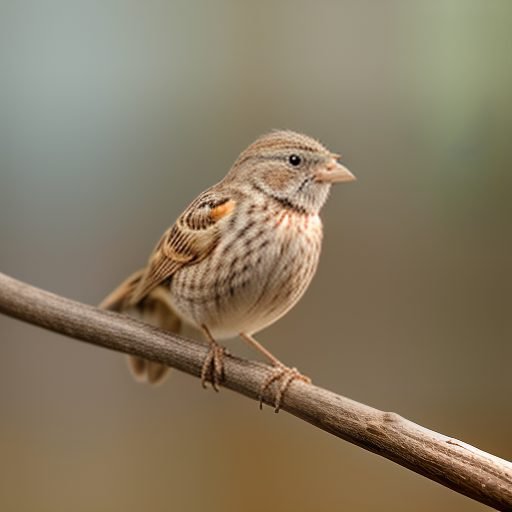
Key Takeaways
- Endemic bird species in Florida such as the Florida Grasshopper Sparrow and the Florida Scrub-Jay are critically endangered due to habitat destruction caused by human development, including the transformation of prairies and scrublands into agricultural and urban areas.
- Agricultural practices and urbanization contribute substantially to the decline of Florida’s bird populations by fragmenting and eliminating habitats, although sustainable farming strategies can mitigate some of these negative impacts.
- Conservation efforts including legal protections, captive breeding programs, and habitat restoration projects are in place to rebuild populations and protect the habitats of Florida’s endangered bird species, with some successes already observed.
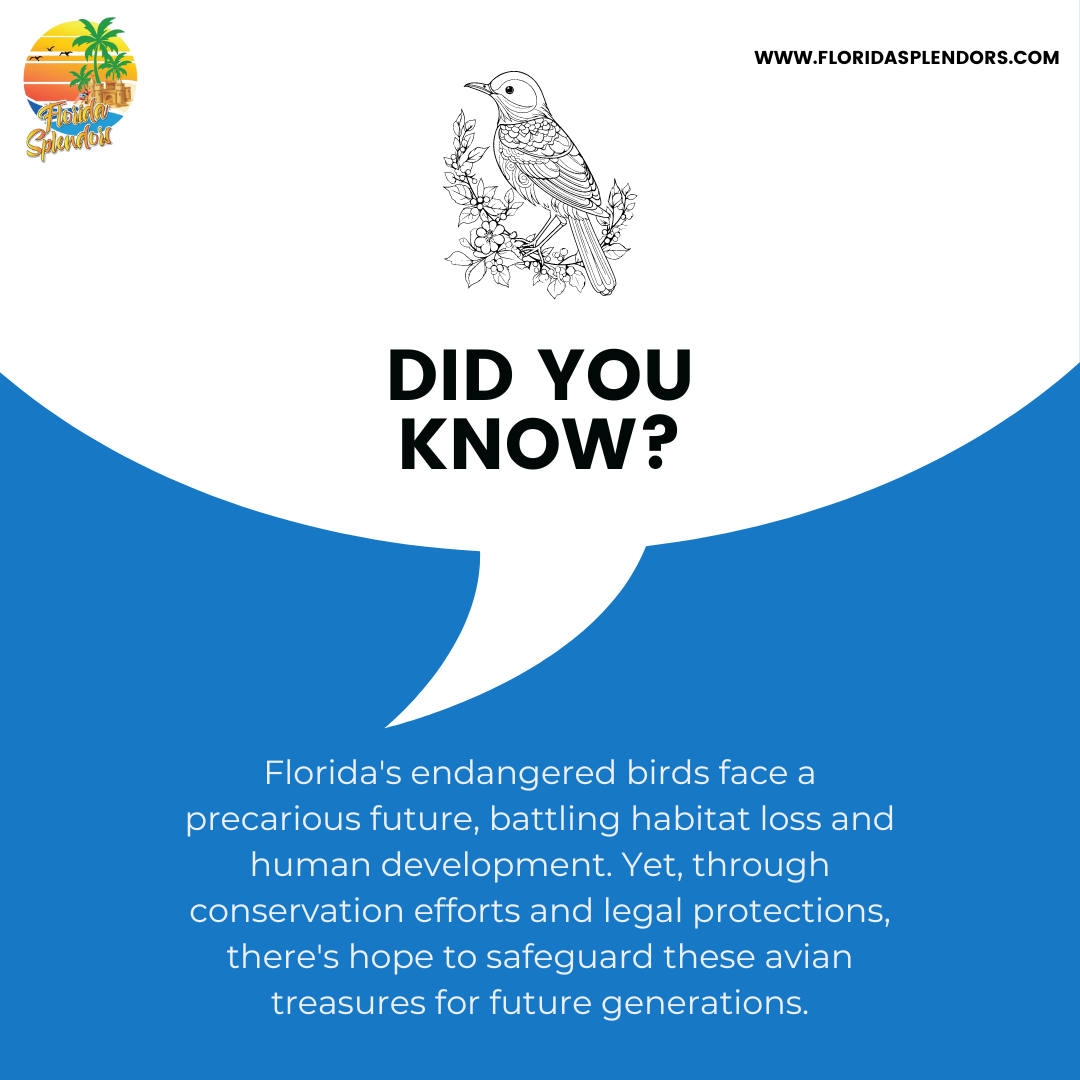
Endangered Birds in Florida: Battling for Survival in the Sunshine State

Florida’s vibrant ecosystems are home to unique bird species like the Florida Grasshopper Sparrow and the Florida Scrub-Jay. These species are endemic to Florida and their existence heavily depends on the preservation of their specific habitats. But with the increasing human footprint, these birds are under threat due to habitat loss.
The Florida Grasshopper Sparrow, dubbed “North America’s Most Endangered Bird,” is a non-migratory subspecies found exclusively on the Florida dry prairie. Yet, with the conversion of these prairies into agricultural land, the grasshopper sparrows’ habitat has seen a steep decline resulting in a population drop.
Similarly, the Florida Scrub-Jay, a bird known for its striking blue and gray feathers, has seen its population shrink due to the destruction of its preferred oak scrub habitat.
Florida Grasshopper Sparrow
Ammodramus savannarum floridanus, commonly known as the Florida Grasshopper Sparrow, is a petite, elusive bird that thrives in the Florida dry prairie habitat of south-central Florida. This ecosystem is under significant threat from human development, particularly from the transformation of natural habitats into agricultural land. Consequently, the population of Florida grasshopper sparrows has plummeted to just above 120 in the wild, earning it a place on the federal endangered species list. The Florida grasshopper sparrow nests are also at risk due to these factors.
These sparrows, known for their understated beauty and distinctive song, are a vital part of the ecosystem they inhabit. However, they face several threats to their survival, including:
- Poor habitat management
- Predation
- Diseases
- Genetic issues
- Habitat destruction, degradation, and fragmentation
If not addressed, these threats could result in the tragic silence of their unique song in the wild.
Florida Scrub-Jay
The Florida Scrub-Jay, another bird species exclusive to Florida, faces a similar plight. This unique species, recognized for its communal behavior and lifelong mating habits, is notable for its striking blue and gray plumage. Despite its unique characteristics, the scrub-jay’s population has significantly decreased over the past decade, leaving an estimated population of only 7,700-9,300 birds in the wild.
The primary cause of this decline is habitat destruction. The Florida Scrub-Jay exhibits a preference for the oak scrub habitat, an ecosystem that has been significantly affected by urban development and agriculture. As their habitat shrinks, these birds face an uphill struggle to survive in an increasingly fragmented landscape.
The Plight of Florida’s Signature Wading Birds
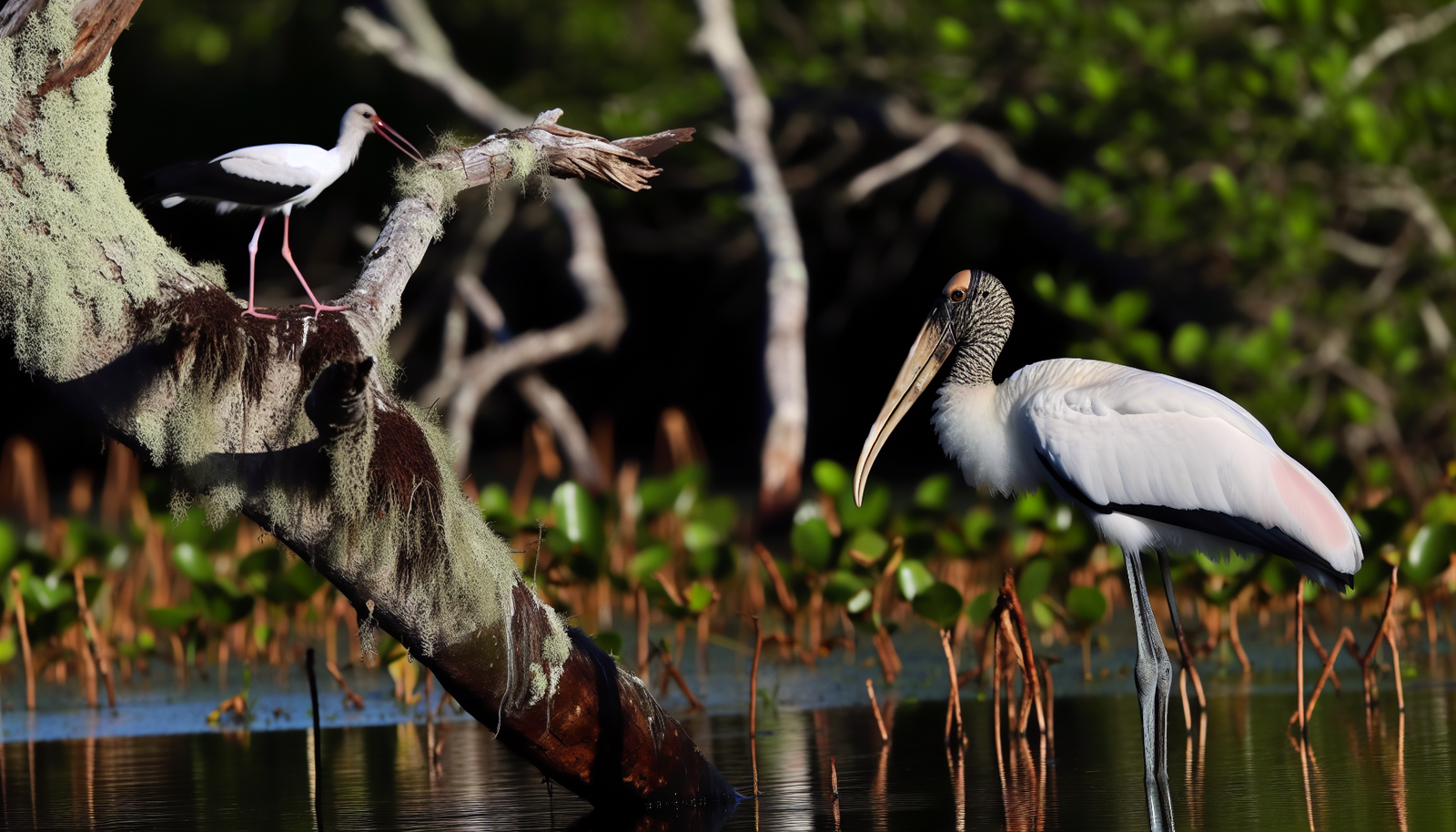
Beyond the exclusive species, Florida is also home to signature wading birds, which are equally facing significant challenges. Among them, the Wood Stork and the Everglade Snail Kite stand out as Florida bird species. These birds, once common sights in Florida’s wetlands, are now federally endangered due to habitat loss and other human-induced factors.
The Wood Stork, a large wading bird known for its distinctive wood-like clattering bill, has seen its population decline, with current estimates putting the number at 10,000 or more nesting pairs. Similarly, the Everglade Snail Kite, a bird once abundant in Florida’s Everglades, has seen its population dwindle to between 2,000 and 3,000, primarily due to the drainage of wetlands.
Wood Stork
The Wood Stork, a bird characterized by its large size and distinctive foraging method, is a prime example of a species affected by habitat loss. In particular, the destruction of wetlands, which are essential feeding areas for Wood Storks, has significantly impacted their population. These birds are dependent on wetlands for feeding and nesting, and the degradation of these habitats has resulted in a decrease in regional stork numbers and a shift in nesting areas.
In addition to habitat loss, the Wood Stork’s diet, which is primarily composed of:
- fish
- frogs
- crabs
- crustaceans
- insects
- occasionally small lizards
Additionally, as the wetlands disappear, the Wood Stork’s sources of food are compromised due to changes in water quality and availability, further exacerbating the challenges they face in sustaining a healthy and viable population.
Everglade Snail Kite
The Everglade Snail Kite, a bird dependent on the presence of wetlands for foraging and nesting, is another species that has been significantly affected by human development. The kite is specifically adapted to feed on apple snails, and the drainage of wetlands has reduced the availability of this critical food source.
The kite’s survival and breeding depend on areas with low canopy cover and proximity to recently burned areas. However, the loss of wetland habitats due to human activities has disrupted their foraging and breeding behaviors, leading to a significant impact on their population. It’s estimated that the current population of the Everglade Snail Kite ranges between 2,000 and 3,000 birds.
Conservation Efforts to Save Florida’s Endangered Birds
Despite the threats faced by Florida’s endangered birds, there is hope. Conservation efforts, including legal protections, captive breeding programs, and habitat restoration, are underway to safeguard these species from the brink of extinction. These initiatives aim not only to increase the populations of these birds but also to ensure their habitats are protected and restored.
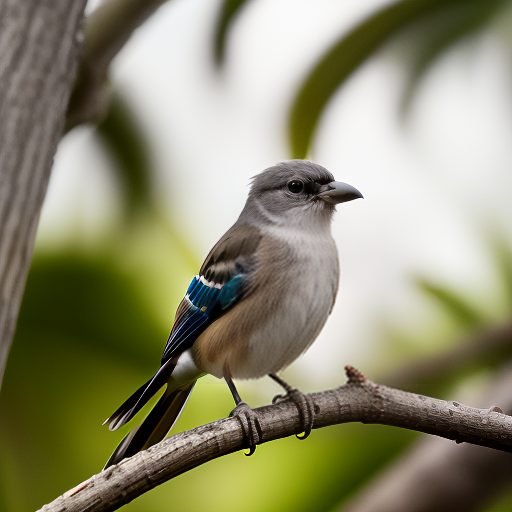
Legal protections such as the U.S. Migratory Bird Treaty Act provide a level of safeguard against intentional harm, while the U.S. Fish and Wildlife Service, in collaboration with state-level services, engage in efforts to conserve these bird species. Additionally, captive breeding programs and habitat restoration initiatives play a crucial role in these efforts, with a focus on increasing populations and reintroducing these birds into their natural habitats.
Captive Breeding Programs
Captive breeding programs are instrumental in the conservation of endangered birds. They enhance the population and aid in their reintroduction to natural habitats. These programs offer endangered birds a safe breeding environment, protecting the offspring from potential predators and disease.
While these programs are not without their challenges, they have seen some success. Approximately 30 percent of the captive-bred birds have been observed to stay at the release site, indicating a level of success in the captive breeding and release program. The selection of birds for these programs is often based on their commercial or entertainment value, as well as their wing shape for successful migration.
Habitat Restoration Projects
Habitat restoration projects form another key aspect of conservation efforts. These initiatives aim at preserving and rejuvenating the natural habitats of endangered birds, thereby bolstering their survival. Notable examples of successful projects include the recovery program for the Florida Grasshopper Sparrow and restoration initiatives for the Florida scrub-jay.
However, these restoration projects are a long-term commitment. From initiating the project to seeing positive outcomes, it generally requires a span of several years. But the long-term benefits for the bird populations and the overall ecosystem health make these efforts worthwhile.
Legal Protections and Wildlife Service Involvement
Beyond the direct conservation endeavors, the legal protections and involvement of wildlife services are integral to the protection of Florida’s endangered birds. Federal and state laws strictly prohibit any unauthorized taking, possession, or sale of any endangered or threatened species, including their nests or eggs.
The U.S. Fish and Wildlife Service, in collaboration with state-level services such as the Florida Fish and Wildlife Conservation Commission, engage in the protection and management of wildlife habitats, compliance with the Migratory Bird Treaty Act, and efforts to conserve bird species in Florida. These legal protections have significantly contributed to the survival and resurgence of endangered bird populations, with the bald eagle, Florida Grasshopper Sparrow, and Brown Pelican among the notable success stories.
The Impact of Human Development on Florida’s Endangered Birds
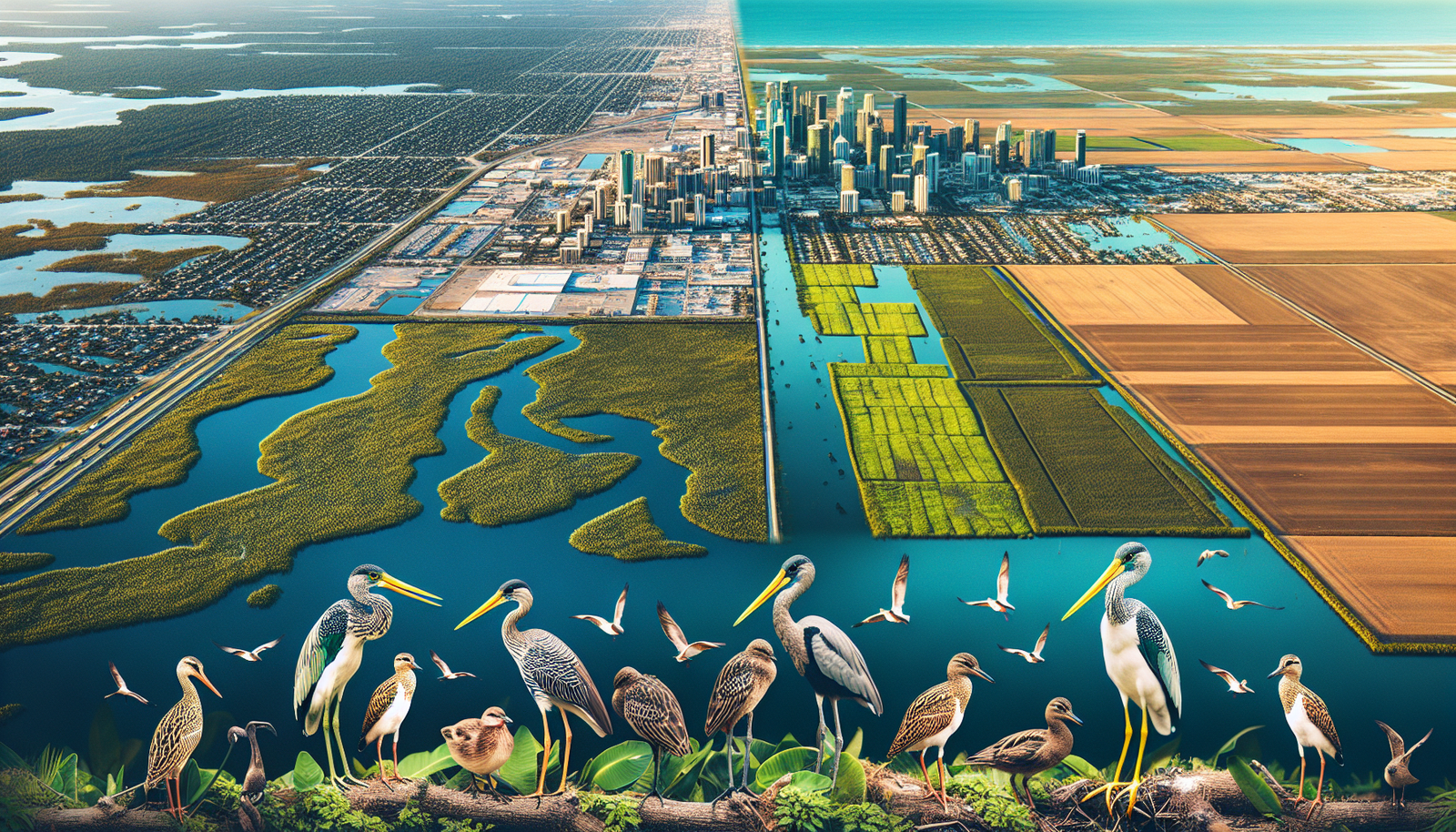
Though natural threats present a significant challenge to bird populations, human development is perhaps the most critical issue for Florida’s endangered birds. The conversion of natural habitats into agricultural fields coupled with the urbanization of Florida’s landscapes has directly led to the dwindling of bird populations.
Agricultural fields, in particular, have led to the fragmentation or even elimination of bird habitats. Similarly, urbanization and coastal development have resulted in habitat loss and fragmentation, restricting the available habitat for birds to breed and reside. However, with the right management strategies, these challenges can be mitigated.
Agricultural Fields
The transformation of natural habitats into agricultural fields has had a significant impact on Florida’s endangered birds. The Florida Grasshopper Sparrow, for instance, has seen a significant reduction in its habitat due to the conversion of dry prairies into agricultural land. Furthermore, the use of pesticides in agricultural fields can have a significant impact on bird populations, leading to declines and negative effects on their health, development, and survival.
However, not all the impacts of agriculture are negative. With appropriate farm management strategies, agricultural lands can also serve as valuable wildlife habitats. Some measures that farmers in Florida are working on to reduce the impact of agriculture on endangered birds include:
- Rest-rotation grazing
- Wet habitat restoration and protection
- Invasive plant removal
- Cover crops
- Conservation tillage
- Provision of nesting sites for endangered bird species
These strategies help to create a more sustainable and wildlife-friendly agricultural landscape.
Urbanization and Coastal Development
The process of urbanization and coastal development in Florida has also resulted in significant habitat loss and fragmentation for bird species. As cities grow and coastlines are developed, the available habitat for birds to breed and reside shrinks, leading to a reduction in the number of birds inhabiting and migrating to the state of Florida.
Specific examples of developments that have resulted in habitat loss include urban development and agriculture pressures in areas such as the Everglades, which have notably diminished bird habitats. The Audubon’s crested caracara and the Cape Sable seaside sparrow are among the endangered bird species most impacted by urbanization and coastal development.
The Role of Invasive Species in Endangered Bird Decline
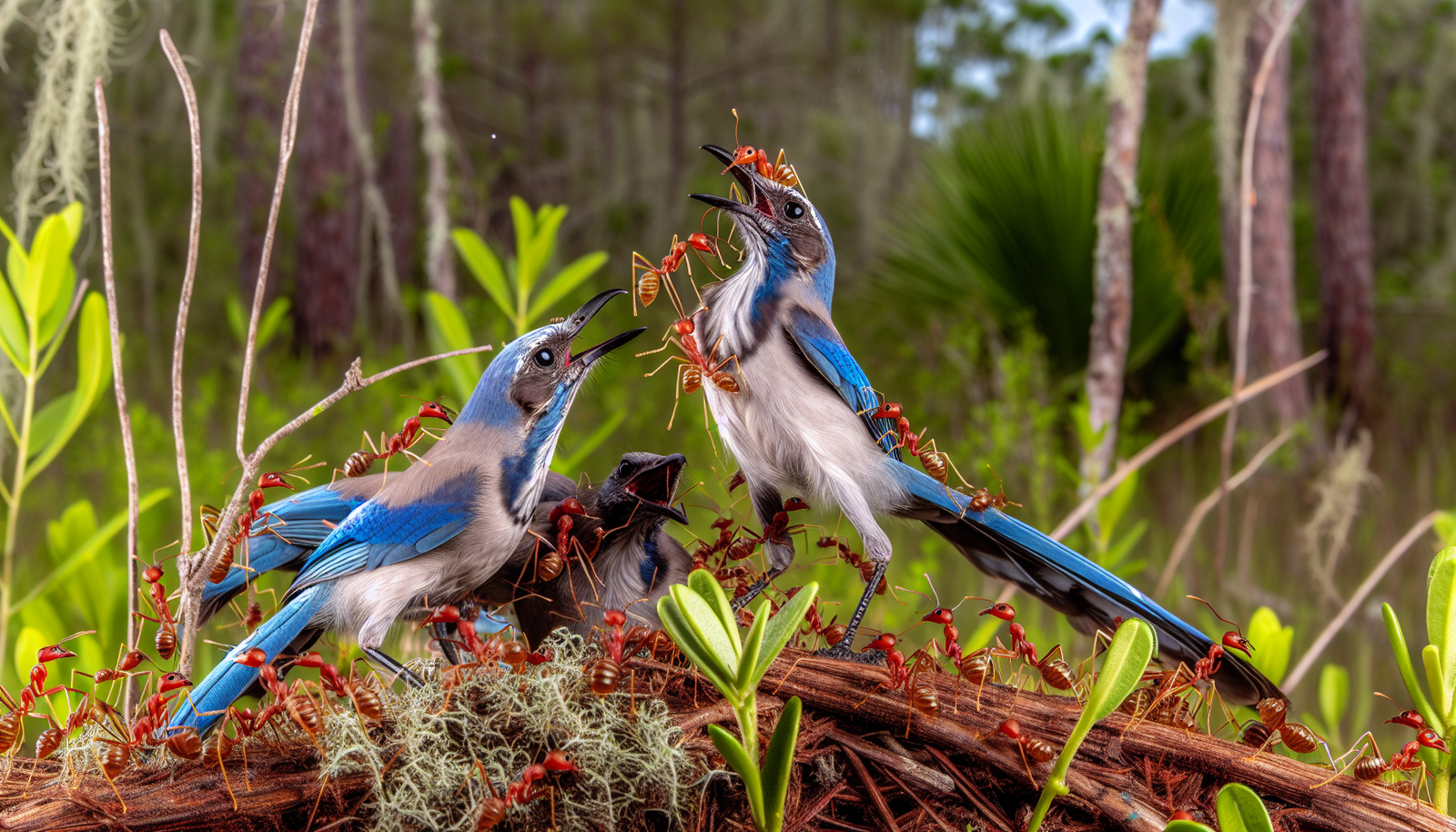
Both flora and fauna invasive species contribute to the decline of endangered birds in Florida. From fire ants to Burmese pythons, these alien species compete with native birds for resources and habitat, thereby adding to the survival challenges of endangered bird populations.
Fire ants, in particular, have a significant negative impact on bird populations. They prey on the eggs and fledglings of birds such as the Grasshopper Sparrow, leading to further declines in their populations.
Other invasive species such as pythons and lionfish engage in competition with native birds for resources by preying on them and competing for food.
Fire Ants
Fire ants pose a significant threat to Florida’s endangered birds. These invasive insects:
- Feed on the eggs and young of birds like the Florida Grasshopper Sparrow, which contributes to their population decline
- Have an aggressive nature
- Can deliver painful bites
- Can form large colonies
All of these factors present a significant threat to birds during the nesting season.
While the threat from fire ants is profound, sustainable control methods, such as broadcast bait applications, are being utilized to manage the fire ant population in Florida. By controlling their numbers, the impact on native bird populations can be mitigated.
Other Invasive Species
While fire ants present a significant threat, other invasive species are also a cause for concern. For instance, Burmese pythons and Brown Anoles prey on birds, and studies indicate that birds make up 25 percent of the python’s diet in the Everglades. Invasive plant species can also displace native plants and their associated wildlife, including endangered species.
Certain bird species, including the House Sparrow and Muscovy Ducks, are also invasive and have the potential to alter the dynamics of the local ecosystem, outcompeting native birds for food and space. Addressing the threat posed by these and other invasive species is a crucial aspect of conservation efforts.

Endangered Birds in Florida: A Hopeful Outlook Amidst Ongoing Conservation Efforts
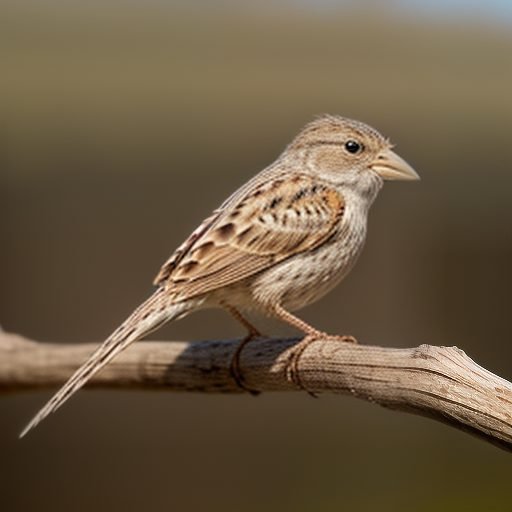
Florida’s endangered birds, including the Florida Grasshopper Sparrow, Florida Scrub-Jay, Wood Stork, and Everglade Snail Kite, face significant threats from habitat loss, human development, and invasive species. Yet, through the concerted efforts of conservationists, legal protections, captive breeding programs, habitat restoration projects, and measures to control invasive species, there is hope for these unique avian citizens of the Sunshine State. The road to recovery may be long, but with continued commitment and action, we can ensure the survival of these remarkable species for future generations to admire and cherish.
Frequently Asked Questions
What's Inside
What bird is endangered in Florida?
The bird endangered in Florida is the Florida Grasshopper Sparrow.
What is the rarest bird in Florida?
The rarest bird in Florida is the Florida grasshopper sparrow, which is a non-migratory subspecies found only in the dry prairies of south-central Florida. This makes it the rarest bird in North America.
What is the #1 most endangered bird?
The #1 most endangered bird is the Kakapo, also known as the owl parrot and native to New Zealand. It is a large, nocturnal, ground-dwelling parrot that has lost the ability to fly through evolution.
What birds are not protected in Florida?
Birds not protected in Florida include established exotic birds like English Sparrow, European Starling, and Rock Dove. These species, along with domesticated pigeons, are descendants of the rock dove (Columba livia). Please verify with the Florida Fish & Wildlife Conservation Commission for the most current information.
Why are Florida's bird species endangered?
Florida’s bird species are endangered due to factors including habitat loss and fragmentation from human development and the introduction of invasive species, leading to predation and competition for resources. These factors have significantly impacted the bird species in Florida.
Explore Florida’s Wildlife Wonders with Us!
Dive into the beauty of Florida’s wildlife on our social media platforms. Connect with a passionate community, discover engaging content, and find product reviews that celebrate the splendors of the Sunshine State’s conservation efforts.
Follow us:
Facebook: Florida Splendors
Instagram: FloridaSplendors
Pinterest: Florida Splendors
Twitter: FloridaSplendor
Join the journey, be part of the conservation conversation! #FloridaWildlife #Conservation
More Great Reads

